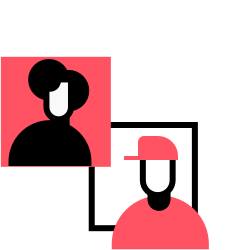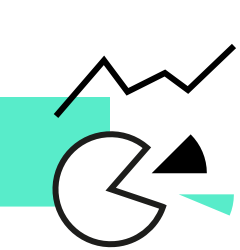Using data is crucial for musicians to promote music: Here's how to do it

We are in the age of information. Big data is utilized by nearly everyone; from individuals to giant corporations, and the ones who can master the art of how to use it best gain a serious advantage. The relatively recent ability to collect such precise data favors not those who can collect the data, but those who can actually do something with it.
Companies such as Netflix and Amazon use consumer data to recommend shows and products that you might like based on your previous consumption habits. Google and Facebook use data to provide you with targeted ads, content, and search results that are more relevant to your online habits. Individuals use data to keep track of everything from health and fitness to how popular they are on social media. There are even hedge funds that use algorithms to scan mentions of companies on Twitter and Facebook to predict stock price fluctuations. With all of the information out there, people's digital footprints create user profiles that make it possible to know more about someone than ever before.
So how can musicians use data to their advantage to better promote music? All music companies, whether streaming services such as Spotify and Pandora who use your listening habits to play more relavant music or record companies who look at online popularity of artsits, take advantage of information that is readily available. Musicians too can use data to analyze how fans interact and engage with their music. It can help to target, promote, and develop your music to gain exposure and popularity.
Information is the basis for all decisions. Especially when you are working with a tight budget, data becomes your most valuable resource to make the next decision about how to promote your music. By learning how to use the information that's available, artists can gain a huge advantage to promoting their music. Below is a list of important metrics to look at and how Feature.fm helps artists to use data.
1. How many plays did your song get and on what platform?
The first, and currently, most widely used metric, is how many plays your song received. This is an initial indicator of your song's popularity. When you run a campaign to promote a song with Feature.fm, this metric is taken one step further by not only showing the number of "featured" song plays, but how many additional "organic" plays resulted from your campaign by your song either being shared, added to playlists, or listened to again in any other way along with a breakdown of where the song was played.

2. How many people listened to your song for more than 30 seconds and what was the "play through rate?"
This is an extremely important metric because it doesn't just tell you how many people hit the play button or initially heard your song, but how many people liked your song enough to keep listening to it. The reason we use the 30 second mark is because with Feature.fm, our goal is to get your music to the right ears, so if the song is skipped in under 30 seconds, it is free. This really shows an important metric of your song's popularity by using your song as its own advertisement. Rather than use a digital display type ad, you can truly use a "listen through" rate to see who liked your song enough to keep listening! "Click through" rates on traditional ads don't really tell you anything about your music.

3. How many people shared, favorited, liked, or skipped your song and what was the "engagement rate?"
So after you view how many people liked your song enough to listen for at least 30 seconds, you can take it one step further and see how many of your new fans liked it enough to then share the song, favorite it, like it, or have any other positive engagement. This is a way to analyze how people interact with your music after actually hearing it as opposed to how many "likes" or "follows" you may have received from traditional digital ad campaigns by people who may or may not have heard your music.

This can also be taken a step further by analyzing this data over time. You can truly see a "life cycle" of your song by viewing the song's rise in popularity over a certain time period.
What is life cycle of featured vs organic plays?

How many total people skipped compared to listening all the way through?

4. At what point in a song did someone engage?
This is one of the most analytics tools that you can measure. If your song gets a lot of skips or a lot of favorites, you can actually measure where in the song someone took that action. This allows you to analyze the actual music and see where certain things work and where you may have room for further development.
Where in the song did someone favorite?
If most of the favorites come right in the first 40 seconds, you know you have a grabbing and powerful intro that pulls fans in right away.

Where in the song did someone skip?
If most of the skips are right in the first 5 seconds, maybe the song wasn't listened to by the right ears and they skipped to the next track. If many skips come at a later point in the song, maybe right when the vocals come in, maybe you can further develop that aspect of your music.

5. What are the ages and genders of people listened to your song?
Now you can use some general demographic information to let you know the type of people who like your music. If a certain age or gender has a preference to your music, you know where to focus further targeting efforts. Target the people who are more likely to enjoy your music!
If your music is listened to by mostly females between ages 18 and 24, you have great insight into who to target.

6. Where do the people that liked your song live?
Geographic location is also extremely important. Are you planning on touring? Are you a local band? You can discover where the people who like your music most are located. This allows you to focus any live gigs or promotional efforts on a specific geographic region.

The best way to promote your music truly is by using your songs as their own advertisement. It's important to take advantage of platforms that allow you to do this, but the data that you are able to collect and use can be your most valuable tool with further promotion. Data is the basis for all decisions. Traditional digital ad platforms are not built for music. They are built for ads. You are only given the number of "clicks" or "engagements."
Data empowers you to develop your music, make better decisions, and promote your music more efficiently.



